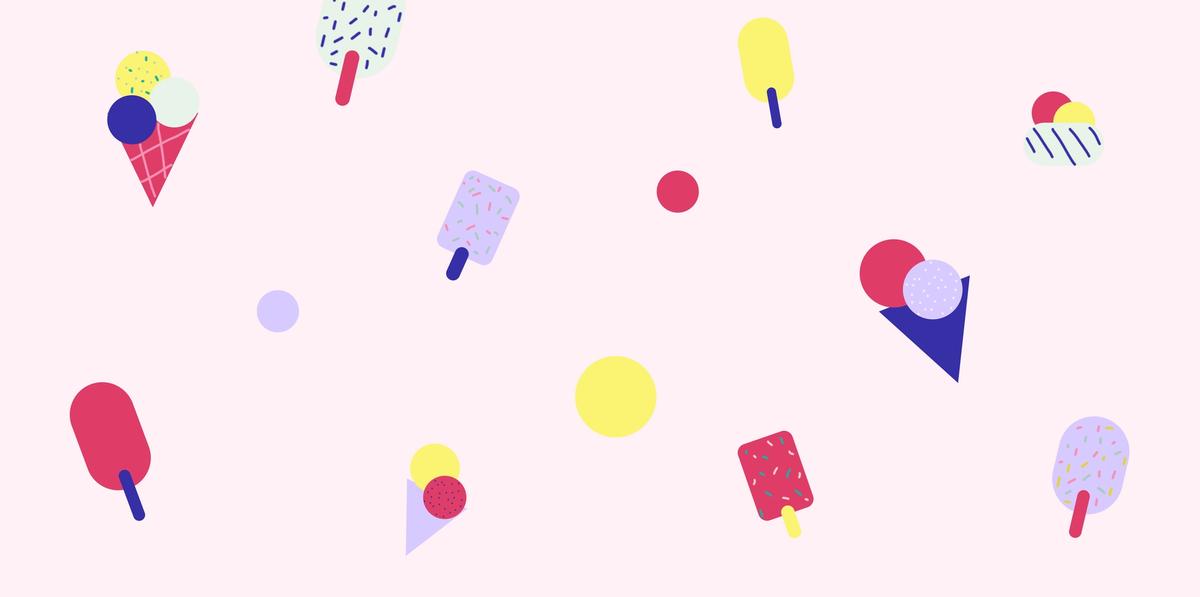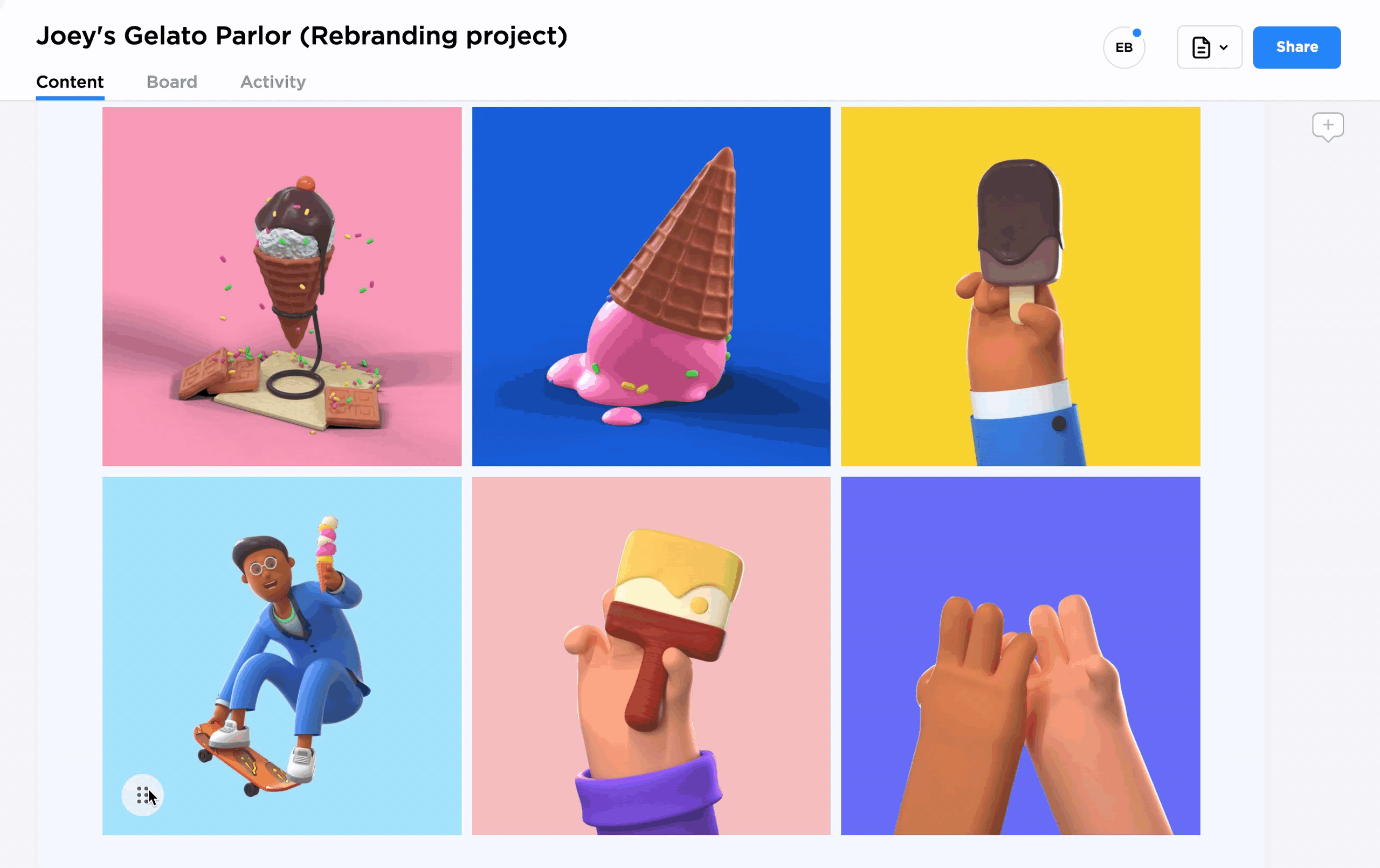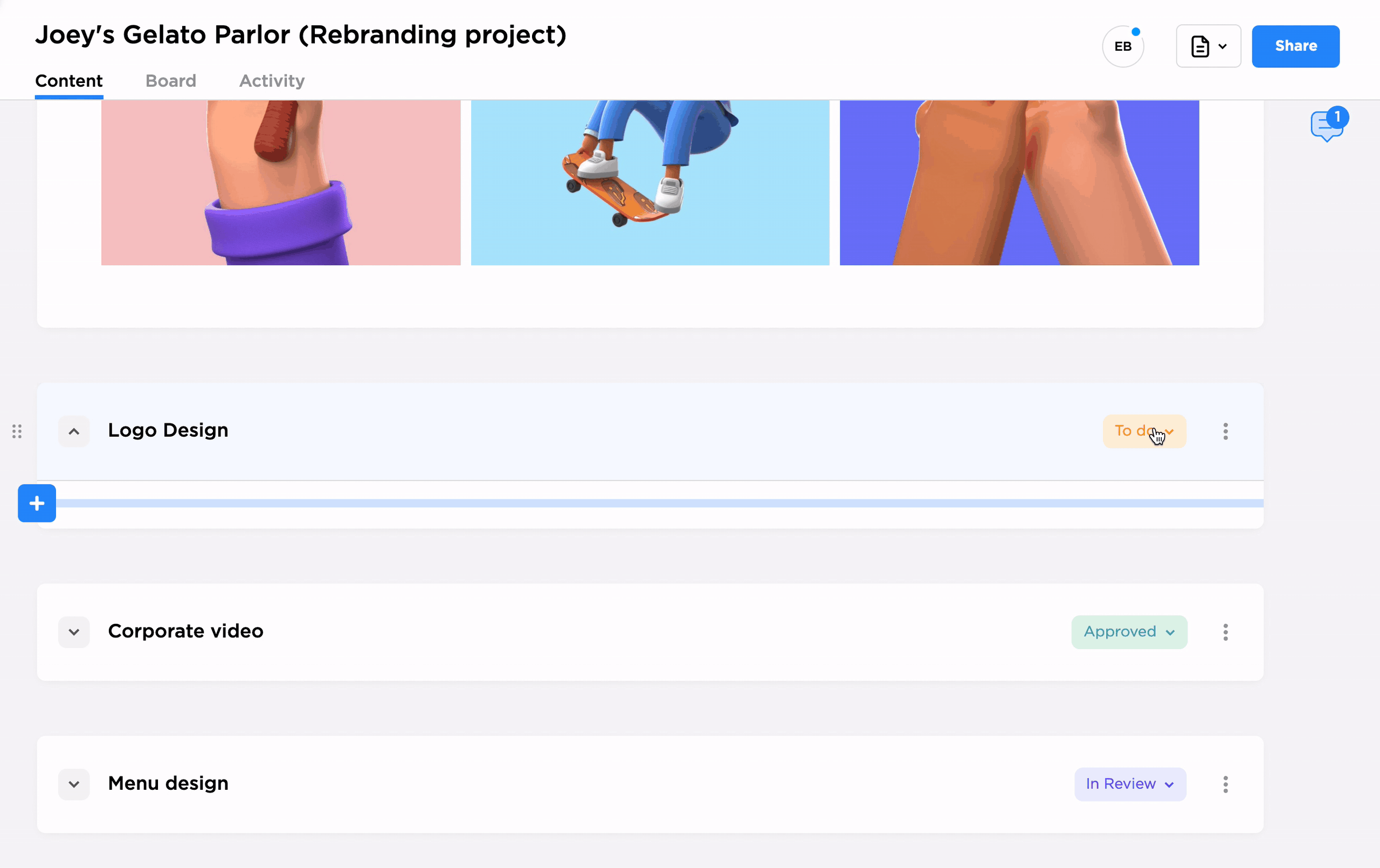Boards, Blocks, and Cards

Things can get pretty hectic at work.
And yet, even with everything you have to do, nothing hinders creative project productivity like poor collaboration. You know how it is, lost feedback, endless floods of emails, forgotten phone calls, and notes scribbled on Post-Its. The common denominator? Words.
But fear not, there’s a solution to this madness. 🎉 Visual collaboration 🎉
If you’ve been keeping up with our product update blog, you probably know about our recent release of ‘boards, blocks, and cards.’ These new and updated features aim to make visual collaboration easy peesy. In this blog, we’re going to give a little background on how these tools came about. Let’s get into it!
Collato’s Story
It’s no secret that Collato stands for collaboration, it’s even in our name! But sometimes collaboration can be pretty tricky, especially if you’re working with multiple teams and departments. So we’ve been on a mission to create tools and systems that make working together easier, like seamless work sharing, simple permission options, and rich feedback features. Just to name a few.
But wait, there’s more!
Not only are we masters of traditional collaboration workflows such as text comments and on-point feedback, but we also emphasize the visual aspects of collaboration as well. To us, that means supporting visual expression and progress management, both vital elements of collaboration.
🤔What is visual expression?
Visual expression is a way of presenting an idea or concept using visual media types such as video, graphics, photos, and editable elements. Essentially, you’re using methods and materials that you can see.
Visual expression can take many forms, such as on social media platforms, product labels, and even fashion! Here are some advantages of using visual expression:
1. It’s engaging
We are constantly engaging with visual elements, just think about how much you scroll social media or watch videos online! How many times have you brought up a funny reel to a friend? Or drawn creative inspiration from a pinterest board? We are constantly interacting with pictures, icons, and videos which makes visuals extremely memorable.
We aren't making this up, sceince supports these claims, too. A study found that when people hear information, they're likely to only remember 10% of what was spoken. But when that same information is paired with a visual element, people recall 65% if the content three days later.
2. It’s efficient
Believe it or not, half of the brain is dedicated to vision. With 70% of visual receptors in our eyes, it only takes 150 milliseconds to recognize a symbol and only 100 milliseconds to attach meaning to it. So when you express yourself visually, you’re giving your audience something that their brain can biologically process faster and with less effort!
3. It's inclusive
No matter where you are or where you come from, visuals get everyone on the same page. Over time, symbols, icons, and colors made their way into our understanding of the world. If you’re traveling for instance, you can likely navigate through an airport because of the visual cues, the pictures of luggage, trains, busses, etc. This same logic applies to the workplace, too. Your teammates and coworkers can collectively understand a certain message portrayed by a visual element.
🤔What is visual progress management?
In a general sense, progress management is a system to track your project development. It’s all about creating and maintaining a workflow to keep your project moving forward.
Visual progress management works in the same way, but it’s the newer, updated version. It uses visual elements to illustrate your workflow and project development. The primary benefit, besides it being engaging, efficient, and universal, is that your team can view what needs to be accomplished in order to push the project forward.
So the question becomes, if visuals are so effective in terms of collaboration, expression, and progress management, how do you incorporate them into your everyday workflow?
Boards, Blocks, and Cards
Since the very beginning, Collato has put a great emphasis on tools that support visual collaboration, which of course also means visual expression and progress management. We are proud to introduce boards, blocks, and cards, our most recent release for easy visual collaboration.
🍨 What are boards, blocks and cards?
Boards, blocks and cards are a method for defining, developing, and executing your creative project. It's meant to help you visualize workflows, maximize productivity, and improve collectively.
Boards let you see a workflow or project -like creative projects, launches, multi-collaborative assignments, etc. - in its entirety. They’re made up of columns which represent a phase or status.

Blocks are any piece of content throughout your project. It might be best to think of it like this, your project is made up of a collection of blocks. It’s the information that makes up your project, like design proposals, NDAs, questionnaires, image gallery, videos, and presentations.
You have the option to incorporate any visual element you want, from images and mood boards to Youtube videos and Powerpoint presentations. The possibilities of blocks are endless, those are just a few examples!

Keep track of all your blocks with cards. Cards help organize your blocks into sections within your project. When you assign cards a status, they are automatically displayed on your board. Or once you’ve finished a task, you can drag+drop the cards to the respective status on your board. Alternatively, you can label a task straight from your content page, as shown below.
There are six status in Collato; no status, to do, in progress, in review, approved, and completed. They are even color coded for easy recognition!

Arranging all of your projects in the form of boards, blocks, and cards makes it super easy to visually organize your work, keep things tidy, and be collectively productive. And for the same reasons that visuals are beneficial in general, they are equally as helpful in the workplace.
One Scoop of Collato, Please!
Collato comes equipped with a large range of tools and resources to make visual collaboration, visual expression, and visual progress management a common place at work. But boards, blocks, and cards are just the beginning. If you want to discover more ways that Collato supports the visual collaboration movement, check out our main page or visit our blog “The Inside Scoop.”
🍦 Related topics you may be interested in:
1. A field guide to visual project management
2. How to add visual elements to your workflow: 5 tips for project managers
